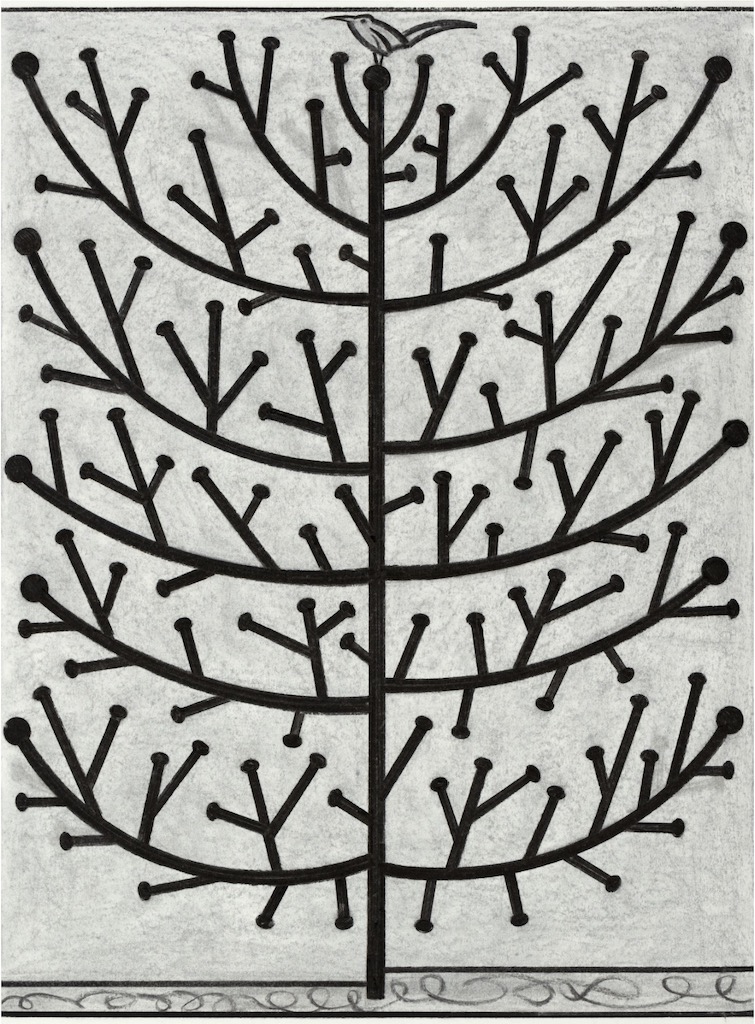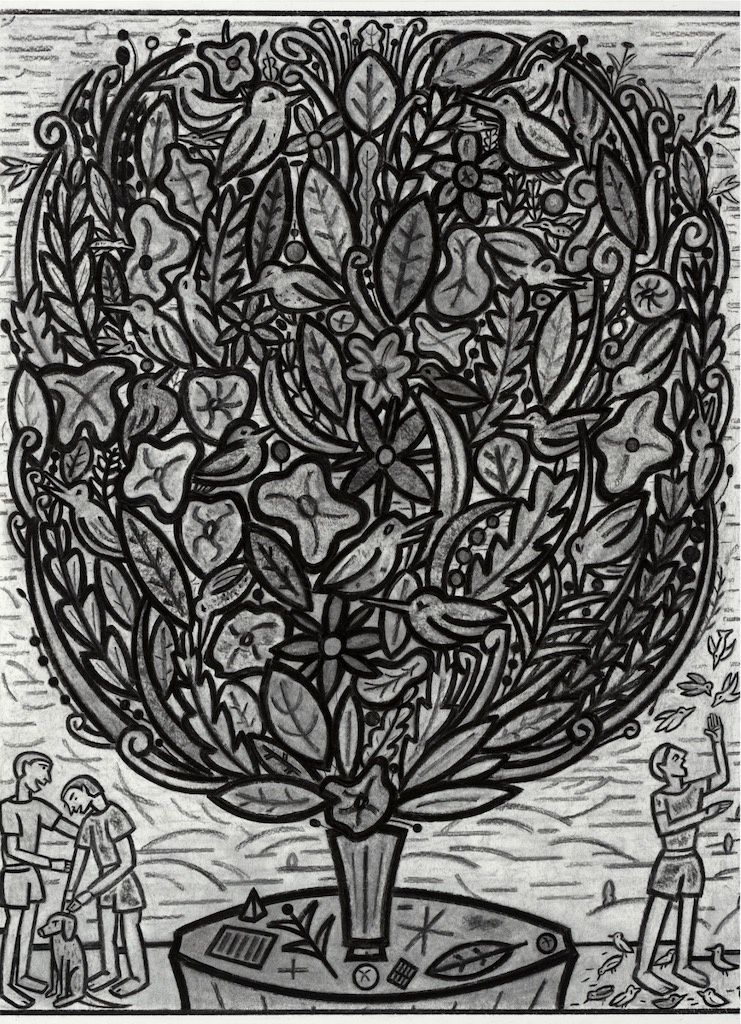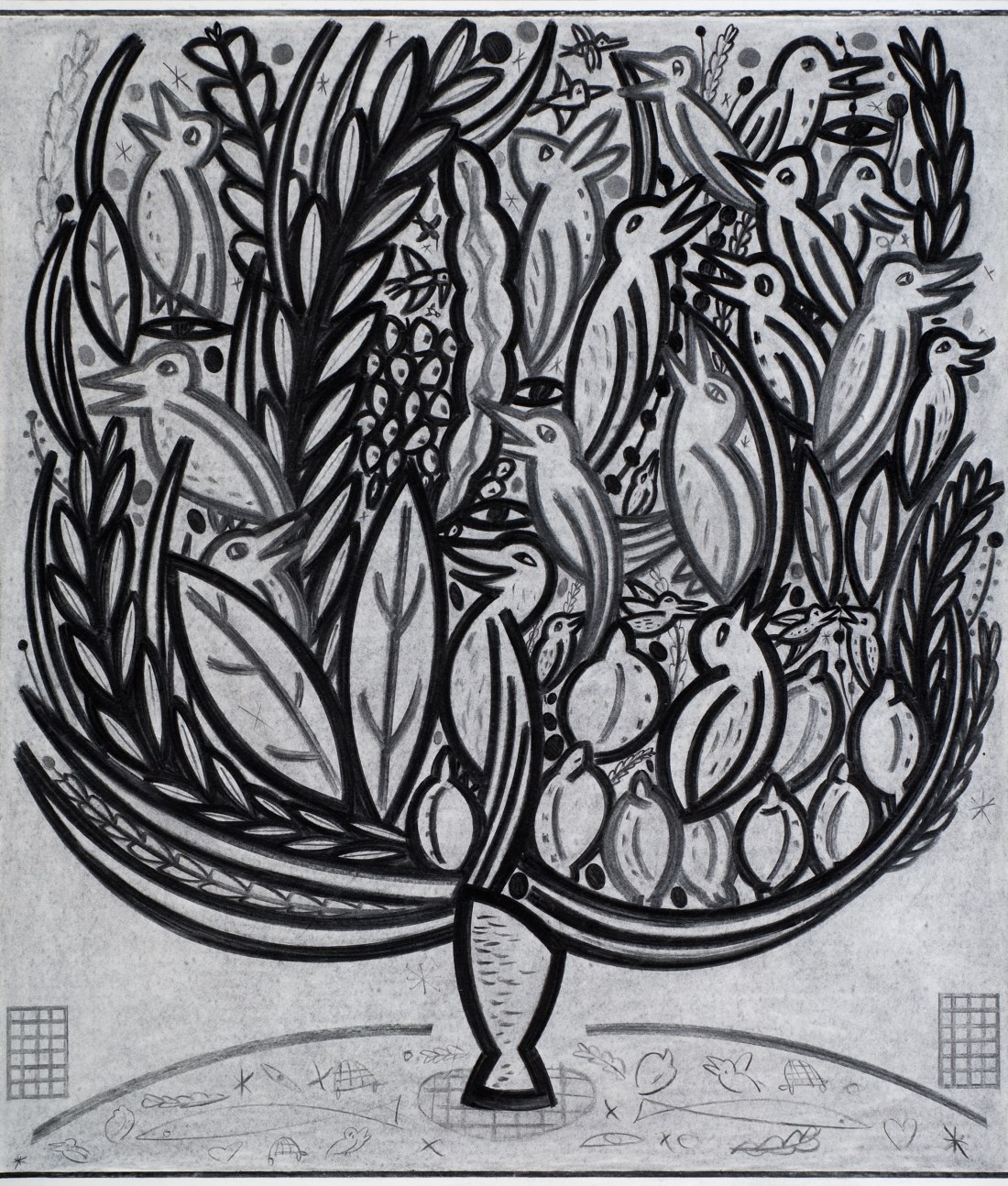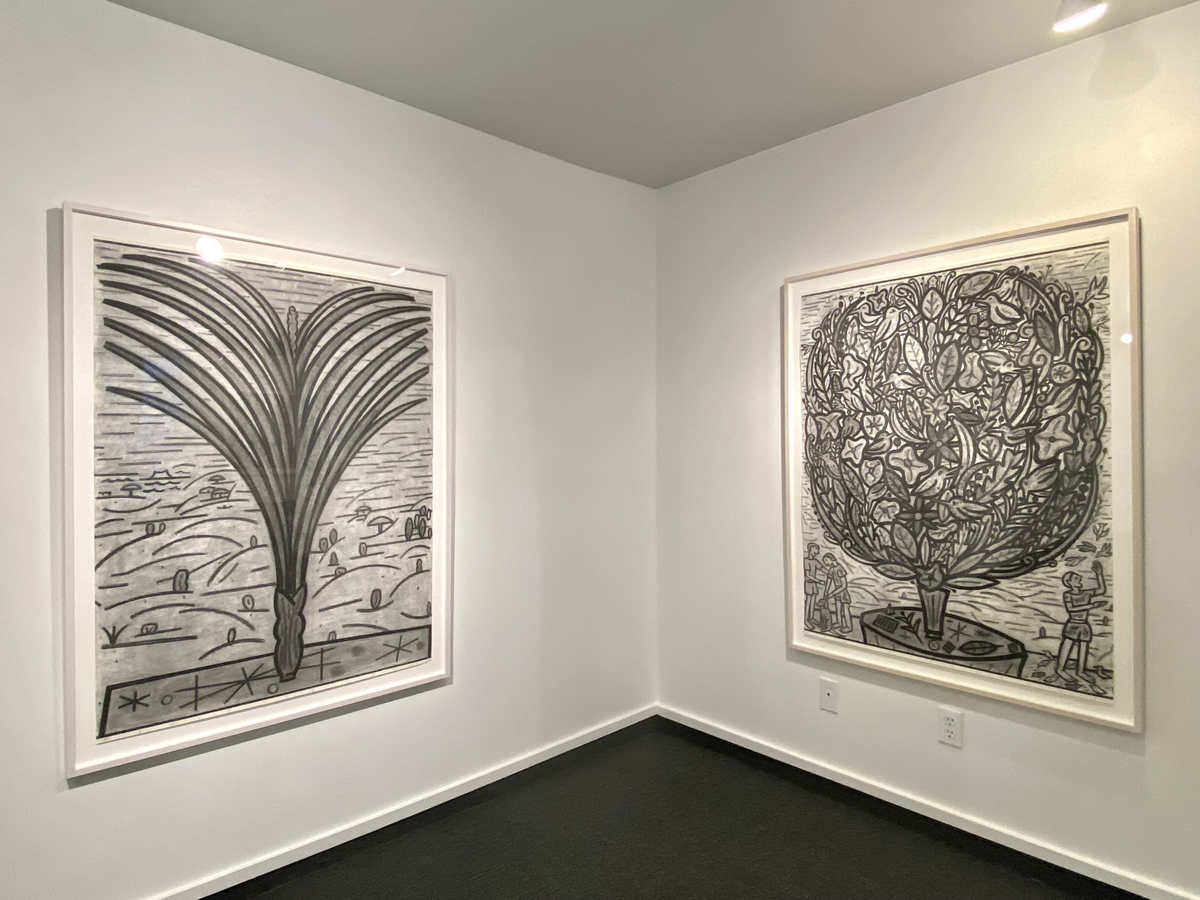In our home, a child’s smile lives over the entrance door. It’s an early canvas painted by Howie Lee Weiss (HLW), unusual for him because most of his work is charcoal on paper. Also unusual is that, while it’s a powerful image, it’s not about the incredibly exacting “perfection” he is going for these days.
More often than not the work’s primary colors hang cockeyed in our living room. I straighten the picture periodically, but for over thirty years it’s been inclined to tilt. I could, of course, secure the painting with a second picture hanger, but I like both its innocent off-centeredness and its response to peoples’ comings and goings. Also, it mimics its image’s quirky quiddity and reflects who created this happy, abstracted portrait.
A singularly responsive individual, Howie’s a brilliant, kind, compassionate kind of guy. The best kind. Watching him critique students’ work at Maryland Institute College of Art, where he has taught full-time since 1979, he never fails to amaze with how carefully he looks and listens. So too, as an artist, HLW projects into his subjects’ lives deeply, whether those subjects are people, plants, objects, or animals. His revisited subjects matter.














